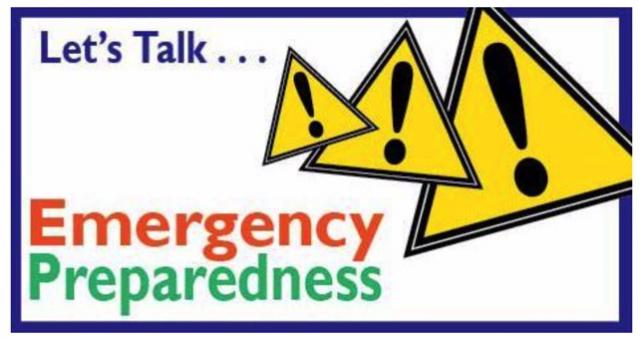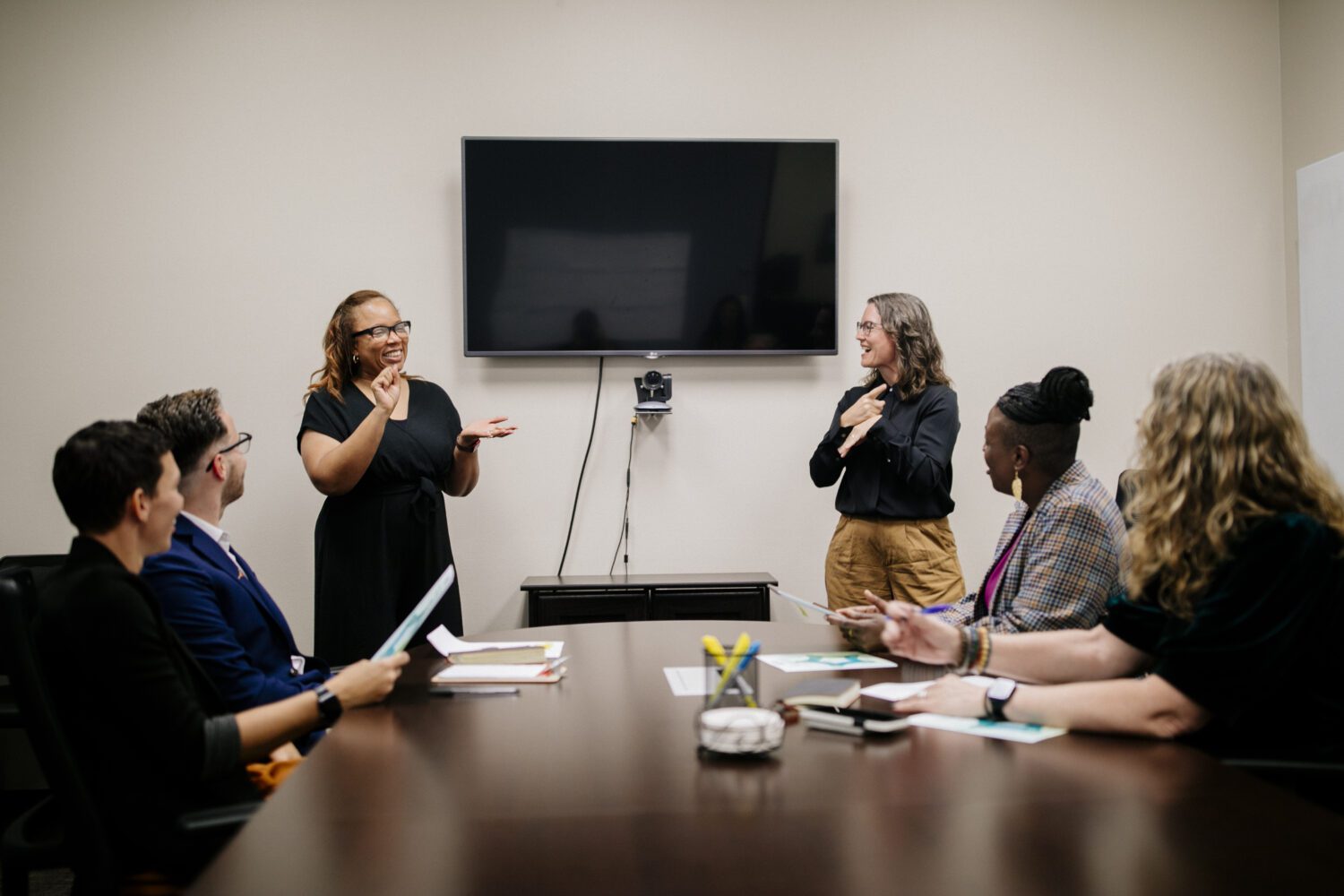September is National Preparedness Month. The 2019 theme, “Prepared, Not Scared”, is a good reminder that this is an ideal time to think about emergency planning and your school’s readiness to respond — in particularly for your deaf students. Are warning systems and communication plans accessible to everyone? Here is a variety of strategies and tools to incorporate into your college’s emergency plan that ensures deaf people have access to critical information.
It is important to review spaces at your campus and how they must adhere to the 2010 Department of Justice regulations. The National Deaf Center’s Equitable Access Guide: Understanding Legal Responsibilities for Institutions describes that, for compliance with the Americans with Disabilities Act (ADA), “where emergency warning systems are provided, they must include permanently installed audible and visible alarms.” (p. 31).
However, a range of anticipated emergencies will involve planning that goes beyond installing accessible fire alarms. While it is not possible to predict when an emergency will occur, actively preparing before, during, and after an event is crucial to the safety of all students, faculty, and staff. Below are considerations institutions should take to ensure the safety of deaf people on your campuses.
Proactive Planning for Emergencies
The most important work involved in emergency preparedness happens BEFORE an event happens. The Federal Emergency Management Agency (FEMA) offers several courses for higher education personnel to develop planning strategies. When developing these strategies, consider the unique needs of deaf people. Here are some suggested tips:
-
Make sure that a diverse group of people are working together on the plan (including deaf people)
-
Develop a communication system that will reach everyone on campus
-
Develop emergency preparedness plans that are accessible in multiple formats (e.g., ASL)
-
-
Accessible alarms should be installed in buildings and tested every six months
-
Test communication devices monthly and ensure extra batteries are available with devices
-
Communicate with deaf people IN ADVANCE the emergency plans on your campus
-
Provide yearly training to public safety officers and essential personnel on communicating with deaf people
-
Have a list of names of communication access providers readily available that can be contacted
-
Develop back up communication plans if access to service providers is not possible
To assist your institution, the National Deaf Center developed a Campus Accessibility Guide as a tool to assess how accessible your campus is for deaf people. This guide can be used as a template for developing a proactive plan to address emergency readiness on your campus for deaf people.
During an Emergency Event
During an active emergency event, the most important task is to communicate with your campus community that a situation is unfolding. Remember, relying solely on an auditory system is not effective for deaf people. As the National Association of the Deaf points out: “…emergency communication systems should be ‘redundant’ – the message should be sent out to as many people and in as many formats as possible (by television, radio, phone/TTY, computer, cell phone, text messaging, pager, and other means).
After an Event
Depending on the type of emergency, the aftermath may require ongoing communications with the community. The following are several ideas to consider when planning for post-emergency notifications:
-
Ongoing communication access services (e.g., sign language interpreters and speech-to-text services)
-
In the event on site services are not possible, both of these services can be provided remotely
-
-
Consider a variety of low to no tech options available for communication:
-
Smartphone/tablet apps for communication
-
Communication cards
-
Dry erase boards
-
Pen and paper
-
Text based communication devices
-
Personal amplification devices
-
Finally, following an emergency event, your institution will want to evaluate the effectiveness of your emergency readiness plan. The evaluation should include answering these questions:
-
Were people notified of the emergency?
-
Did people know where to seek shelter?
-
Did people have access to information during the event?
This debriefing should involve the same group of people who helped develop the emergency preparedness plan to see what worked well and identify areas for improvement. Feedback should also be collected from people who were impacted by the emergency event.
Additional resources:
[Image description: Rectangle with blue border. Inside the rectangle are words “Let’s talk…” in the upper left corner in blue letters. The words “Emergency” (in red) and “Preparedness” (in green) are in the bottom left corner. Three yellow triangles with black exclamation points are inside the rectangle starting in the center and progressing right.]








